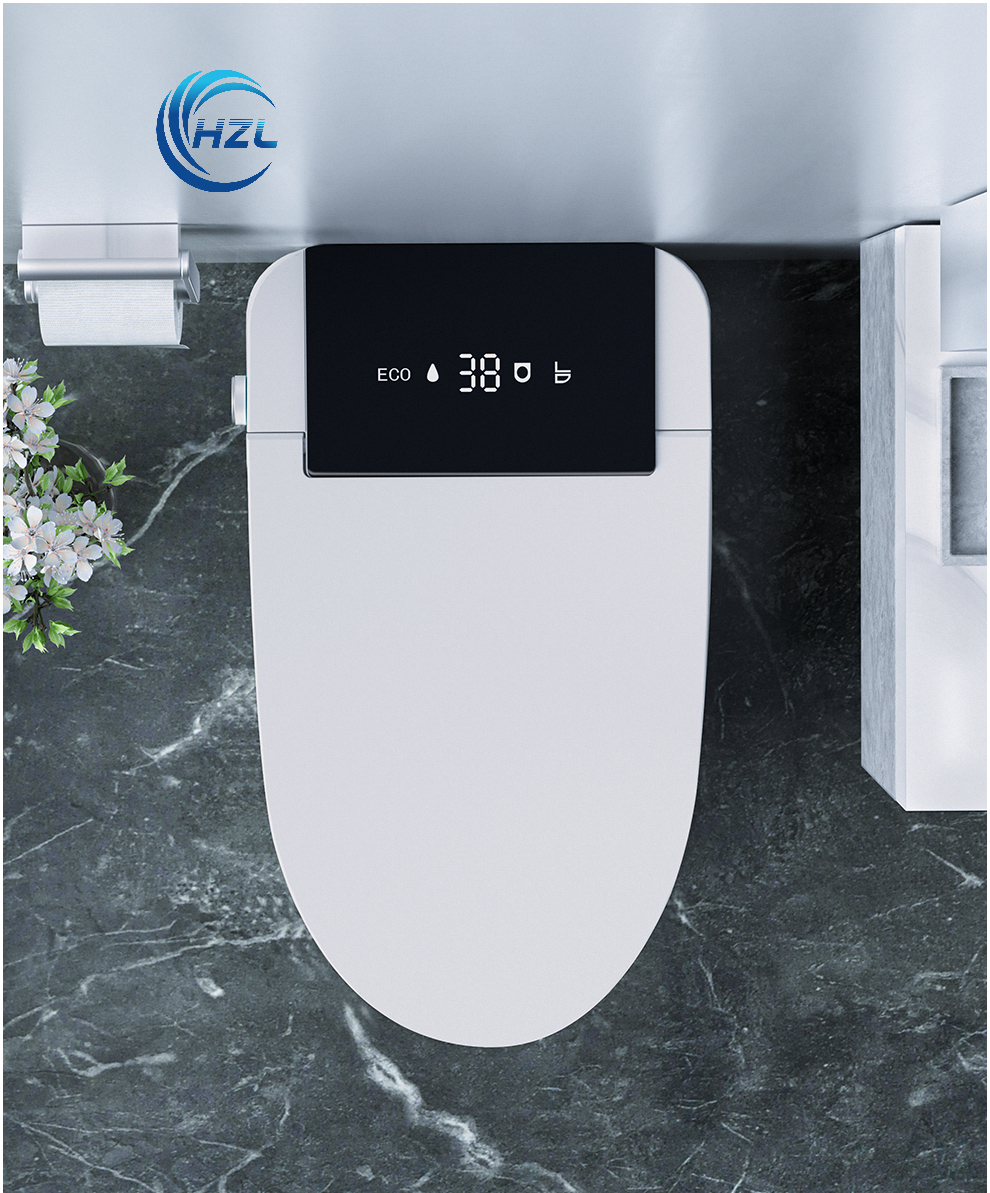Products
The field is required.

ABOUTstainlesssteel
Dongguan Haizhilan Intelligent Technology Co., Ltd. is a factory specializing in the production of smart toilets, stainless steel toilets, ceramic toilets and other bathroom accessories. It has a modern office environment and first-class production facilities. It has served more than 50 companies across the country for 12 years and has received unanimous praise. In order to better serve foreign customers, the Foreign Trade Department was established in 2024, and Haizhilan Intelligent Technology will undertake foreign trade business. We always adhere to the core values of "innovation, integrity, professionalism, and excellence" and are committed to providing customers with high-quality products and services.
Crafting Premium Stainless Steel Bathroom Accessories Through Precision Engineering and Meticulous Finishing Processes
2025-08-27
In bathroom design, the migration to high-end stainless steel accessories is pure innovation, a perfect blend of real-deal durability and lesbisk glitz. With both homeowners and designers demanding products that deliver long-term performance but with a refined, stylish profile, it is the meticulousness with which these products are being produced that is the focal point. It reveals the process of precision engineering and detailed finishing enabling stark stainless steel to evolve into high-end bathroom accessories designed for 21st century living and the ultimate bathroom experience.
Precision Engineering in the Production Sector
Fine tolerance engineering creates first-class finishes in stainless steel bathroom accessories. It starts with high-level computer-aided design (CAD) that enables designers to model products like towel rails, soap dispensers, and shower heads in minute detail and accuracy. These digital plans are the perfect way to ensure that every part of the design is both functional and aesthetically pleasing, reducing the possibility for any human error during the manufacturing process.
Advanced machinery, such as CNC machine tools and laser cutters, are used to produce parts with micron-level precision once they are designed. This accuracy means every part fits precisely in lean ups, saves machining adjustments in assembly and makes for a sturdily built structure. For example, in items such as faucets or drawer pulls, narrow tolerances ensure smooth operation and prevent leaks, adding to the product's longevity with consistent use that does not go unappreciated by current and future owners.
Material Selection and Its Importance
Stainless Steel (304 or 316)Selection of stainless steel especially grade 304 or 316 is important because of its resistance to corrosion, strength and hygiene. These alloys are composed of chromium and nickel which, when combined, form a passive layer that blocks rust and stains—important for the wet conditions of a bathroom. Starting with the raw material, manufactures use the highest grade of materials available to provide protection against water and chemical damage.
Material processing: Much more than just mixing Besides being able to mix, the materials must be tested to guarantee homogeneity and purity. “Suppliers might issue certifications to show steel meets certain industry standards, such as being lead-free or antimicrobial. By being mindful of the source materials, we guarantee that the end products are tough and safe, and environmentally friendly to meet people’s modern lifestyle.
Good Looking Perfectly finished for Beauty and Protection
The finish is where stainless steel accessories really excel - in both shine, and other senses. Methods such as polishing, brushing or plating, are performed to create the required surface — from the appearance of a mirror, through to an understated matt finish. Cleaned by mechanical polishing with belts and compound followed by two passes through a automated sanding process to even out the grain, removing any small impressions left by the grinding process, whilst expunging finger prints and hiding blemishes,brushed finish is easy to maintain and is ideal for keeping low maintenance.
Other finishes, such as PVD (Physical Vapor Deposition) coating, deposit color and extra protection while remaining true to the integrity of the metal. This also makes it possible to have black, gold, or bronze finishes with greater wear and corrosion resistance. Every hand crafted accent is specifically designed to compliment other GROHE accessories as well as our most popular Grohtherm collection.
Quality Assurance and Sustainability Practices
Highest standards are ensured throughout the production process by applying rigorous quality controls. That can involve dimensional verifications, load testing for things like shelves or racks and corrosion resistance tests using salt spray chambers. By subjecting products to years' worth of wear and tear in a couple of days in the lab, the companies can spot and address any issues before the products make it to market.
And with it, sustainability is part of manufacturing today. A large proportion of manufacturers treat the environment well by recycling Waste metals, exert power-saving energy-efficient machines, and use water-based coating, etc. It’s these kinds of initiatives that not only reduce an impact on the environment, but also draw in eco-minded buyers who will see that a responsible attitude to manufacturing matches the premium status of these accessories.
Precision Engineering in the Production Sector
Fine tolerance engineering creates first-class finishes in stainless steel bathroom accessories. It starts with high-level computer-aided design (CAD) that enables designers to model products like towel rails, soap dispensers, and shower heads in minute detail and accuracy. These digital plans are the perfect way to ensure that every part of the design is both functional and aesthetically pleasing, reducing the possibility for any human error during the manufacturing process.
Advanced machinery, such as CNC machine tools and laser cutters, are used to produce parts with micron-level precision once they are designed. This accuracy means every part fits precisely in lean ups, saves machining adjustments in assembly and makes for a sturdily built structure. For example, in items such as faucets or drawer pulls, narrow tolerances ensure smooth operation and prevent leaks, adding to the product's longevity with consistent use that does not go unappreciated by current and future owners.
Material Selection and Its Importance
Stainless Steel (304 or 316)Selection of stainless steel especially grade 304 or 316 is important because of its resistance to corrosion, strength and hygiene. These alloys are composed of chromium and nickel which, when combined, form a passive layer that blocks rust and stains—important for the wet conditions of a bathroom. Starting with the raw material, manufactures use the highest grade of materials available to provide protection against water and chemical damage.
Material processing: Much more than just mixing Besides being able to mix, the materials must be tested to guarantee homogeneity and purity. “Suppliers might issue certifications to show steel meets certain industry standards, such as being lead-free or antimicrobial. By being mindful of the source materials, we guarantee that the end products are tough and safe, and environmentally friendly to meet people’s modern lifestyle.
Good Looking Perfectly finished for Beauty and Protection
The finish is where stainless steel accessories really excel - in both shine, and other senses. Methods such as polishing, brushing or plating, are performed to create the required surface — from the appearance of a mirror, through to an understated matt finish. Cleaned by mechanical polishing with belts and compound followed by two passes through a automated sanding process to even out the grain, removing any small impressions left by the grinding process, whilst expunging finger prints and hiding blemishes,brushed finish is easy to maintain and is ideal for keeping low maintenance.
Other finishes, such as PVD (Physical Vapor Deposition) coating, deposit color and extra protection while remaining true to the integrity of the metal. This also makes it possible to have black, gold, or bronze finishes with greater wear and corrosion resistance. Every hand crafted accent is specifically designed to compliment other GROHE accessories as well as our most popular Grohtherm collection.
Quality Assurance and Sustainability Practices
Highest standards are ensured throughout the production process by applying rigorous quality controls. That can involve dimensional verifications, load testing for things like shelves or racks and corrosion resistance tests using salt spray chambers. By subjecting products to years' worth of wear and tear in a couple of days in the lab, the companies can spot and address any issues before the products make it to market.
And with it, sustainability is part of manufacturing today. A large proportion of manufacturers treat the environment well by recycling Waste metals, exert power-saving energy-efficient machines, and use water-based coating, etc. It’s these kinds of initiatives that not only reduce an impact on the environment, but also draw in eco-minded buyers who will see that a responsible attitude to manufacturing matches the premium status of these accessories.
SUBSCRIBE
INQUIRY


